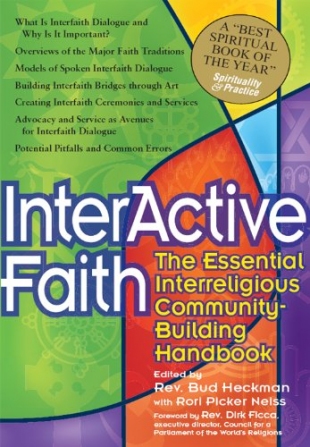"Their concerns quickly turn to excitement as Susan Teegen-Case and Pam Hooks, artistic leader of the Arts & Spirituality Center, introduce the plan. Centering on the theme of hospitality, they explain, teens will create collages for the covers of their Walking the Walk loose-leaf journals, write in their journals, and take cameras and explore the premises to capture any images that convey the value of hospitality. If they choose, students will be interviewed by Pam on video about what hospitality means to each of them.
"This reflection technique goes far beyond arts and crafts, as Susan, an artist herself, shows some examples of her own collage work and describes the intention and processes that underlie this seemingly simple art form. Collage is a nonthreatening art form, accessible to participants with varying levels of comfort with and attraction to creating visual art. This medium is often enjoyed by participants with a wide range of learning preferences and with varying commitments or comfort with the group. Susan encourages participants to consider a question they want to focus on in their collage, and then flip though magazines and collect those images that capture their attention and say yes to their question. The idea is to do this without analyzing, but simply responding to the intuition of the moment.
"Susan hands out a list of questions to prompt the students' reflections and broaden their thinking about the theme of hospitality. She suggests, 'Choose two questions that you like the most, and one that you don't.' The questions include: 'Do I welcome all parts of myself?' 'Is there a stranger in me?' 'What does he/she look/feel like?' 'Who welcomes me?' 'What images do we think of when we think of hospitality (e.g., open/closed doors, hands)?' 'Is hospitality always welcome?' 'Is it always safe to be open and hospitable?' 'How do we know?' These questions stimulate the teens to reflect on the values in the texts they studied earlier that afternoon and integrate them with their own thoughts and experiences.
"Both students and adults now sit around tables strewn with magazines brought from home, their pages filled with colors and images that evoke their diverse cultural heritages and popular interests. These publications jostle for space with scissors, felt pens, colored paper, glue sticks, and photocopies of the translated hospitality texts that had been part of their earlier dialogue. Those seated are initially quiet and thoughtful, but gradually the noise level rises. Sounds of rustling through magazines are intermingled with chatter and laughter.
"Throughout the collage sessions students also become photojournalists, taking pictures that reflect answers to the questions posed by the artists: 'What gestures or visual cues promote hospitality?' 'What do my gestures and other nonverbal expressions say to others?' 'Do I invite people in?' 'Do others perceive me as hospitable?' 'In what ways am I expressing hospitality in the way I act, dress, greet friends, strangers, use body language, share my belongings, invite people to my home, school, and congregation?' They are excited to be videotaped by Pam, who interviews them individually about their experiences of hospitality. The students note the discoveries of the day, as they share their collages and insights. The group also celebrates the beauty that has happened in just an hour, as they view the photographic collage that Pam has assembled from their photos."
